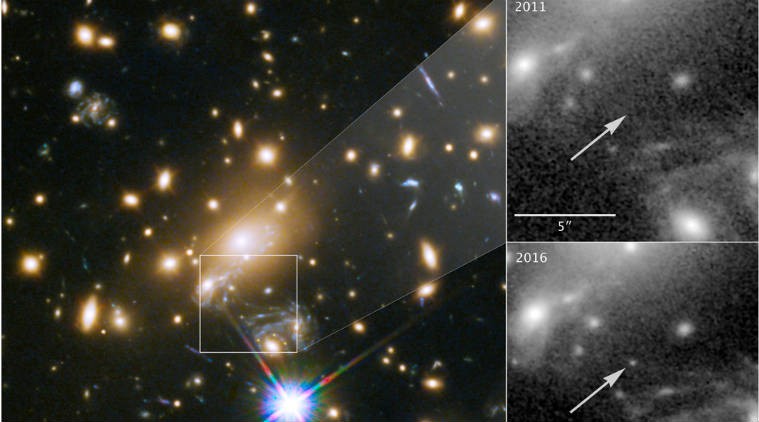- Setting a new distance record, astronomers using NASA’s Hubble Space Telescope have discovered an enormous blue star nicknamed “Icarus”, the farthest individual star ever seen. They also used Icarus to test one theory of dark matter and to probe the make-up of a foreground galaxy cluster
- The star, harboured in a very distant spiral galaxy, is so far away that its light has taken nine billion years to reach Earth
- Normally, the star would be too faint to view, even with the world’s largest telescopes. However Icarus, whose official name is “MACS J1149+2223 Lensed Star 1”, is only visible because it is being magnified by the gravity of a massive galaxy cluster — located about five billion light-years from Earth. This was done through a phenomenon called gravitational lensing. Gravitational lensing occurs when forces of gravity from massive cluster of galaxies acts as a natural lens in space, bending and amplifying light.
- In gravitational lensing, gravity from a foreground, massive cluster of galaxies acts as a natural lens in space, bending and amplifying light. The discovery of Icarus through gravitational lensing has initiated a new way for astronomers to study individual stars in distant galaxies. These observations provide a rare, detailed look at how stars evolve, especially the most luminous star
- Detecting the amplification of a single, pinpoint background star provided a unique opportunity to test the nature of dark matter in the cluster. Dark matter is an invisible material that makes up most of the universes mass.
Source: The Hindu

